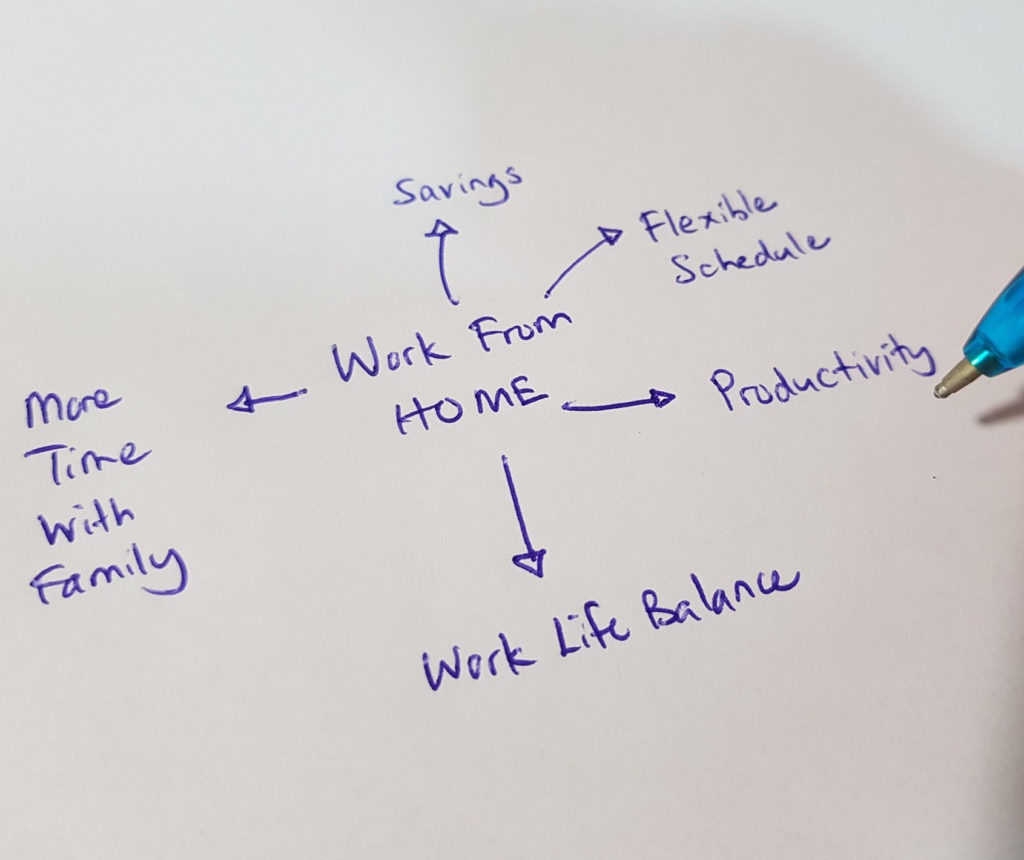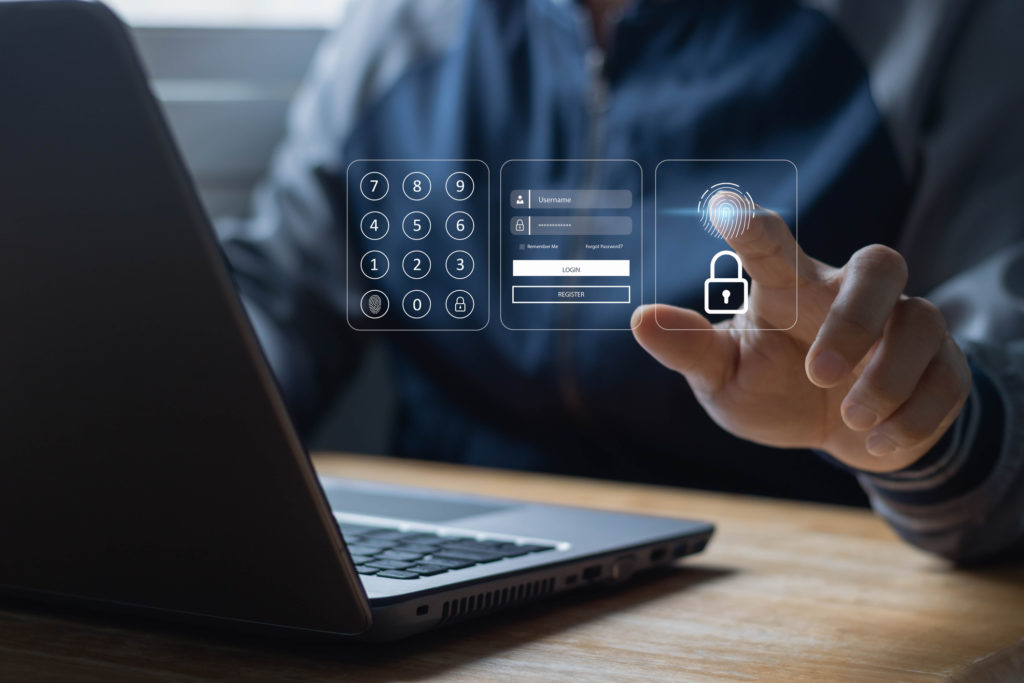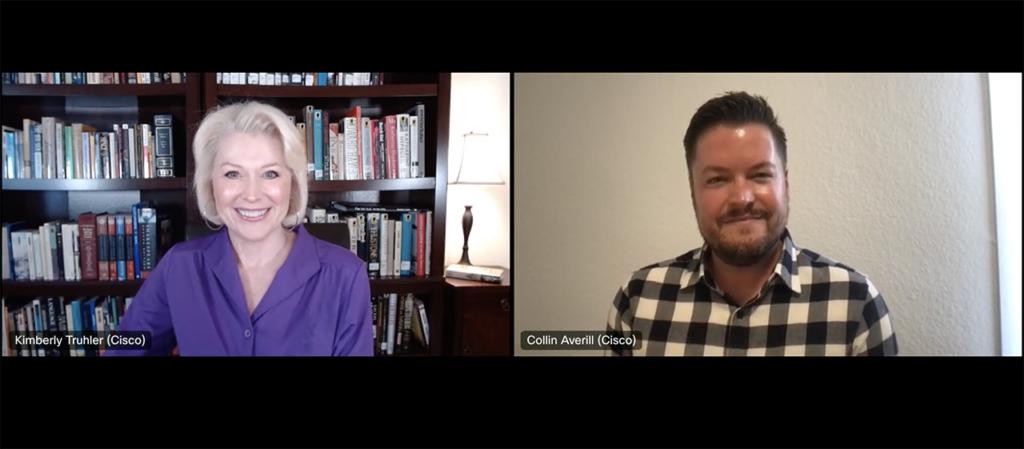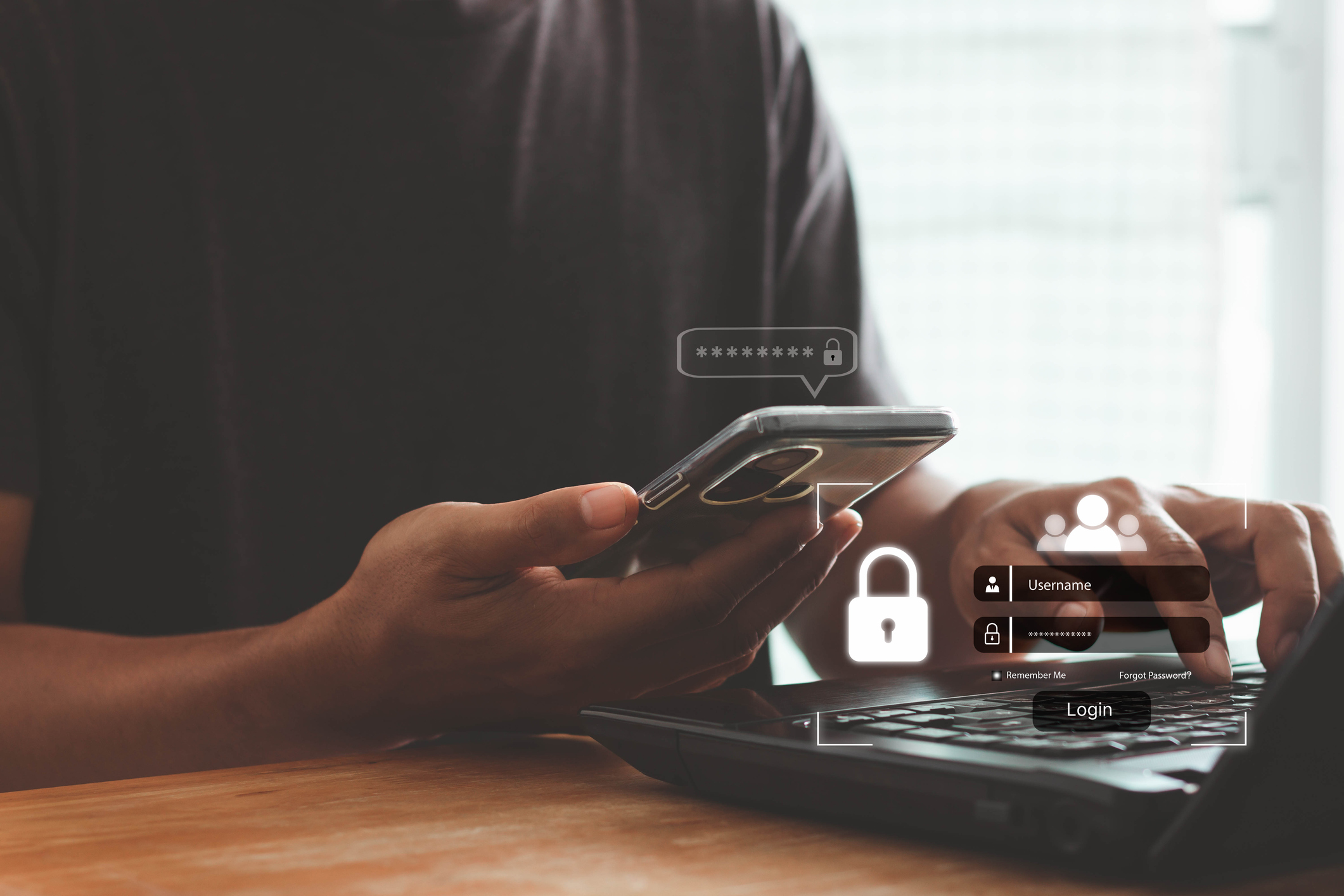Did you know that 75% of small businesses with fewer than 50 employees now have a hybrid work model? We spoke with Cisco’s Collin Averill, a 15-year networking expert, about the state of hybrid work and everything you need for an evolving workforce.
Kimberly Truhler: Hi everyone, I’m Kimberly Truhler, I’m the Integrative Marketing Manager for Meraki Go and I’m so excited for today’s conversation about hybrid work with my guest Collin Averill.
Collin is the Solutions Marketing Manager at Cisco with a focus on Experiences and how those shape the modern workforce and workspace. He’s also working on competitive intelligence gathering with an eye on cloud-based competitors.
Collin has spent more than 15 years in the networking and telecommunications industry with roles in Learning and Development, Product Management, and of course, Solutions Marketing. Welcome Collin!
Collin Averill: Thank you so much, Kimberly, for having me today. I’m really excited to have this conversation.
KT: And this is a good one. Because this is something that, though we’re focusing on small businesses, I think we’re all having conversations about hybrid work whether you’re an employer or an employee. I mean, case in point, you’re based in Denver. I’m based in Los Angeles. We work for a global corporation that’s based in San Francisco. So we are living the hybrid dream right now.
CA: We definitely are.
What is the state of hybrid work today?
KT: Some of our conversation is that it might be easier for bigger companies to achieve a hybrid workforce and more challenges for small businesses. I know a lot shifted with the pandemic. In the pandemic, people were sort of forced into the remote and hybrid workspace. But now things are settling all over the place. Companies are trying to find their bearing. So what is the state of hybrid work for small businesses in 2023?
CA: That’s a really phenomenal way to start this out. I think I want to start with sort of the elephant in the room around this. The term “hybrid work” or “remote work” has been so prevalent over the last 3 years and I think a lot of folks believe that, because we’ve talked about it so much, that everyone is there. That everyone’s achieving and succeeding, and they’ve met their goals, and they’re checking all the boxes, and they’re doing an incredible job. And I think what we find is that is maybe not always the case.
Just because it’s been in the news and all these conversations, it doesn’t mean that folks have really found their stride yet. And that’s why I think these conversations are so critical, because it hasn’t gone away. And it’s not getting any easier in a lot of cases. But the good news is I feel like we have so many examples and role models now of organizations that have tried and failed, or tried and succeeded and iterated over the years, that I think that path to a stronger hybrid and remote work state for organizations, including smaller businesses that are supported by Meraki Go, is in a much better spot. And recently we did a SMB survey that showed for small businesses – so think 50 employees or less – 75% of those are in a hybrid or remote work model. That’s 3 out of 4 small businesses. That is the truth that we’re running into today.
You’ll hear this throughout this conversation today, but there needs to be a focus on cybersecurity. Because the moment you pull someone out of a work location, all of a sudden security issues grow exponentially. Those challenges come into play in 52% of organizations – 52% of organizations in our survey say they’re focused on cybersecurity, and we really want to see that number keep growing up because security is so key.
I think the last thing I’ll mention is we heard that the top 3 factors for small businesses when selecting an IT solution are cost, ease of use, and reliability. I think whether you are a very small organization or a huge enterprise, honestly those 3 are pretty consistent. It’s just what they mean or how they reveal themselves that can be different.

What do small businesses need to do when they offer hybrid work?
KT: I think we need to take the pressure off small businesses. We work at Cisco, but even Cisco has evolved with hybrid work. It’s like you bump into the challenges and then you just deal with them. So I want to take a little pressure off of the small business owners out there so you don’t feel like you have to be perfect out of the gate. And we’re here today discussing all of this and giving you options so that you don’t feel that pressure. We know that it’s harder for small businesses with their budgets and so on.
So what do small businesses need when they start offering hybrid work?
CA: I think there are some, I’ll call them the bigger boulders, that they need to be thinking about. This is by no means an exhaustive list, but I think we hear these over and over again from folks. The first is communication. No matter where your employees are based, you have to have the ability to have regular communication and the ability to have multiple avenues for that communication. So whether it’s email, or chat tools, or video conferencing, or whatever the case may be, those are super important because in a lot of ways they have taken the place of an in-person meeting.
And I would say another of the reasons that communication is so critical is because we hear folks talk about productivity, right? If you’re a remote worker, if you’re a hybrid worker, how are you staying productive? How are you staying focused? And these communication techniques are a huge part of that, making sure that we are still delivering on the goals and the expectations that the businesses need from us.
KT: I get a little frustrated with the storyline that gets out there about remote employees not being productive. Or “how can we keep on top of our employees to keep them working?” It’s like, if you have projects that have deliverables, you’ll know pretty darn quickly. And also, when I worked in the office at other companies, it was a running joke that the bulk of our communication was done by email even when we were in a cube universe.
So I think people need to put aside the whole “you need to be in the office so that we can see you working.” I think people need to shed that pretty quickly. Because again you and I are living breathing examples. I’m more productive in a hybrid work environment where there are fewer interruptions, I mean, we get interrupted on Slack and stuff like that. But I’m way more productive working remotely than I ever was in the office. For what that’s worth.
What are the benefits to businesses that offer hybrid work?
CA: I think that’s huge. So this general enablement for employees and staff, right? One of those is comfort.
I’m in that millennial age group, and I am always thinking about my work-life balance. That, to me, is critical because my family is so important. I just got back from a huge family vacation. That’s how I spend my time. That’s where I enjoy my life. And I need to be able to have that flexibility so that when my nephew needs to be picked up from school, and mom and dad are swamped with the other kids, I can jump in and be able to support them in that way. So I’m thinking about those things as well.
What I love about hybrid work, too, is the benefit for businesses and organizations that then have access to a larger talent pool.
Being there in person is critical for some businesses by nature. For example, one of the small businesses my parents own is an engraving business that’s been in the family for like 60 years. Now it’s kind of hard to be an engraver remotely, right? But my mom is essentially the CFO and IT department – those are her roles. She’s also the CEO, if we’re being honest. And you know, she can really do those roles from anywhere. She’ll go on vacation. We have a small cottage on a lake in northern Michigan, and that’s where she will spend her time. She can do her work from there.
And so I’ll put a bow on this by saying anytime I talk about hybrid work, I’m gonna talk about security. Hybrid work demands those layers of security to protect both businesses, employees, and customers. So we’re using multi-factor authentication (MFA). We’re also using virtual private networks (VPN). In the end, I think that’s in service to both the employees and the customers. As a customer of any business, sometimes we’re asked to provide identifiable data – email addresses, phone numbers, street addresses, etc. And those may seem benign, but those are tied to private information.
There’s always going to be a security risk with that kind of stuff. You may feel like, “Well, I give my email to everybody. It doesn’t matter.” But security around that is paramount, especially as we think about how we can make a better experience for our employees and customers.
In 2022, there was a 79% increase in productivity from hybrid work.
SOURCE: AT&T Future of Work study
KT: I totally agree. Let’s talk about just a couple more benefits of hybrid work. I just did an interview with Colin Seward, who works on sustainability and IT at Cisco, and sustainability and hybrid work really go hand-in-glove. Because now you’re cutting down on the commutes. Now you’re cutting down on the amount of power, water, etc. that you have to pay for in the office. Small businesses do need to acquire some things for hybrid work – including, to your point, things like Meraki Go for security – but there are cost savings and other benefits for small businesses that I really want them to appreciate.
CA: You know, I spend a lot of my time talking about sustainability as well and I think you brought up some really incredible points. What we see over and over again is that business objectives and sustainability objectives usually pair up, or overlap, or are the same thing.
You talk about this concept of reducing costs. That is a business outcome. We’re trying to find efficiencies and all that. But sometimes that cost reduction comes from lower power consumption, right? I think to your example of reducing travel and waste, they all do – to steal a phrase from you from just now – go hand-in-glove. It’s the perfect way to talk about that because they are so intertwined and connected to one another.
KT: And you talked about the importance of the work-life balance. I mean, you may be in a generation for whom it seems to be more of a priority, but even my GenX generation feels that way. I think life is just getting so crazy and people are grounding themselves saying, “Okay, what is really important here? We have one life to live – what can we do to have our best lives?” And hybrid work, to your point, does enable a much better work-life balance. Granted, you kind of have to learn to set up some boundaries. Because, for example, I’ve got my Cisco set up in my home now. It’s not like you leave the office and you leave the work behind any more. But once you do establish your boundaries and get into the groove, you’re able to do more with the same amount of time.
And, as we’re both saying, we’re not suffering and the productivity department. In fact, there are many studies to support that. AT&T’s 2022 Future of Work study said that there was a 79% increase in productivity from hybrid work. I think that one of the myths is that once you allow remote and hybrid work, everybody’s just going to be slacking off with their “work-life balance.” But that just isn’t the case. So I want small businesses to feel empowered by offering hybrid work and not hindered by it.
CA: I love that.

What are the challenges of hybrid work?
KT: We’ve talked about the benefits of hybrid work, but you also touched upon one of the challenges. The big one for hybrid work is the immediate need for cybersecurity. You and I have the experience at Cisco, which has multiple layers of cybersecurity to protect the network, protect the employees, and protect the company.
So can you talk about that a little bit more? What should owners and leaders be prepared to do to protect their businesses?
CA: Yes, that’s a really important question. Sometimes the simplest tools are the best. You and I work for a global corporation. I am securely connected to the network via VPN. I think sometimes folks may dismiss these technologies or concepts. Because they are not new, right? These are not new ideas. But they have become more important and everyone should leverage that.
Even on my personal machines, I have VPN. We always need to think of it as – how do I make it just a little harder for hackers? The analogy I always think of is that I lock up my home. Like, if somebody really wants to come in, they’re coming in. But if I’m locking doors and windows, and if I’ve got motion lights, I’ve sort of raised the minimum challenge they will face to try and enter the home. That can make a big difference. So how do you take the target off yourself?
I think there are many technologies out there, but honestly, let’s start with VPN. And Meraki Go products include VPN licensing, right? So I think it’s just like an easy tool.
KT: It’s even easier than that. Meraki Go has no licensing!
CA: That’s right! It’s different from Meraki.
KT: Yes, one of the biggest benefits of Meraki Go is that you buy the device and that’s it – there are no required subscriptions and licenses. And just this past October, we came out with the Router Firewall Plus, which originally had client VPN and now has site-to-site VPN as well. Which for small businesses, if you’re not familiar with that, means you can have a Router Firewall Plus at each one of your locations and you can connect to one another through that secure encrypted “tunnel,” if you will, which protects all your confidential business information.
CA: Amazing, Thinking about these small businesses, there are basic protections you can put in place that are really strong and backed by Cisco. Cisco Talos detects millions and millions of attacks every day across our network. That’s something I really want to be able to say to small businesses – let us bring that expertise so that you can go do what you do best which is serving your customers, taking care of your employees, and making your community a better place.
KT: Well, that’s the thing. These devices come with so much security within it, even beyond the VPN. Like you’re saying, they’re looking for malicious websites. They’re looking for ongoing and ever-evolving online threats coming at you. And then just good old under-appreciated multi-factor authentication. When I talked to Cisco IT expert Mike Storm about cybersecurity, he said nearly 100% of account hacks are stopped with multi-factor authentication. You mentioned that we have VPN at Cisco. But we have multiple times a day when we’re doing both VPN and MFA – depending on where you’re going in the network, you’re gonna get challenged with multi-factor authentication as well. And that’s something that small businesses can do as well.
CA: I do want to acknowledge that sometimes these security processes can feel annoying. They can feel that way to the user, right? Like having to log in multiple times, and having to make sure I’ve got my phone with my app so that I can verify the code, and all of these things.
But it’s really important that we help small businesses be able to tell that story to their teams. Our goal is to reduce the negative impact to your day-to-day. And sometimes that’s how we make logging on and authentication simpler, right?
I think that is an important discussion and to say – “Yes, I know. It may feel a little harder. May feel a little cumbersome at times.” But that cost is so outweighed by the benefit.
KT: I completely agree. I saw a quote that the hackers count on you you to be lazy. And they are rewarded every time you are. Right now there’s a stat that only 45% of companies globally have enabled multi-factor authentication.
So you speak to it feeling cumbersome and yes it’s an additional step. The good news is that organizations like Cisco are continuing to try to make multi-factor authentication feel less cumbersome. You know, we’re getting biometrics involved with MFA. Our fingerprints, for one – we’ve all got laptops now where you can log in using your fingerprint.
So, small business owners, just know that people are working on it.
CA: Absolutely, absolutely.

What are mistakes that small businesses make when setting up hybrid work?
KT: So what do you think are some common mistakes that small businesses make when they start the process in setting up hybrid work?
CA: So, for those of you listening to this conversation, I apologize if I hit too close to home.
KT: It’s coming from a place of love.
CA: Absolutely. So I think the first big mistake small businesses make is leveraging consumer solutions.
KT: And what do you mean by that?
CA: Great question. So think about when you roll into Best Buy, right? And you’re like – “I heard that I need more wireless coverage, and I Googled and that means a mesh network.” So I went and I bought – I won’t name any brands, insert brand here – to create a mesh network to be able to propagate WiFi across my organization and across my location. There’s something sort of nice about that because it feels easy to do, especially because you may not have an IT department in-house to be able to help you with that.
KT: Well, if I may, I’ll give you an even easier one than that, which is just using the equipment you get from your cable company to do all your business stuff. We know it happens all the time. It’s “easy” and as a result I think it’s where we see a lot of challenges.
CA: There are a lot of businesses where the most separation that they will do for a network is having 2 different SSIDs, right? One for the business and one for guests. Anywhere you go now, it’s sort of expected that WiFi is available, especially in a place where someone might be for an hour or more. I’m thinking of a lot of restaurants and cafes, but also libraries or whatever the case may be, right?
There are people who are very smart and they can figure out how to hack into a network that may have business devices attached to it, which I think I talked about a little bit earlier often stores this personally identifiable information. They can get access to those resources databases.
My sister-in-law owns a social media company where they work with small businesses. We talk a lot about marketing and what you “own”? Sure, you have followers on Instagram, for example, but technically that’s Instagram, right? You don’t own those.
What you do own are your email lists. I think about small businesses that are gathering emails, whether it’s for newsletters, or for promotions, or whatever kind of communication they want to do. Well those emails are possibly tied to things like credit card information depending on how your systems are set up.
So I think leveraging consumer-based solutions – consumer-grade rather than business-grade – can be a slippery slope for folks.
I would say another one is that I would love for small businesses who are facing challenges is to first take a step back. I had an old mentor who used to say “Get in a helicopter. Get up above and look more broadly at the challenges you’re facing.” To be able to say yes, this is a challenge that I’m dealing with right now, but are there other sort of tangential or adjacent situations where, if I just think a little more broadly, I can maybe solve those as well.
An example I always like to use is around physical security. More and more we are thinking about how we monitor and protect the spaces that our employees and our customers are in. Maybe we’ve got a physical security focus, but with the same data we’re collecting – meaning the visual understanding of spaces and how people use them – I might be able to say, “I’ve got this seating area over here that nobody’s ever in. I wonder if I can do something different with that to make it more engaging to draw more folks in and make better use of my space.”
So the answers aren’t always clear, or maybe they’re not always as obvious, but I always love to challenge organizations to just take a step back and make the most of any challenge you’re facing.

What are some additional tools to consider?
KT: I like that. It applies to Meraki Go because there are a lot of things that Meraki Go can solve. First of all, you’re getting enterprise-grade security. So, to your point, don’t use a consumer device for your business.
Secondly, you’re talking about spaces and just getting more intel from being able to observe something like that. Meraki Go offers Guest Insights, so you start learning when the bulk of your customers are coming in, the peak times of business through the day. This can help you craft loyalty programs, for example. There is just so much data that you can pull from that.
And then also having the separate networks, the separate SSIDs for all your business activities like the point-of-sale (POS) system, and all the equipment like printers and phones. But then there’s also the Guest WiFi that has its own landing page.
I know that there are entire companies out there that are set up to address one of those things. But to your point, by looking at it from that 30,000 foot view and see all of your needs, you can get everything associated with business-grade WiFi (rather than consumer-grade) through Meraki Go.
CA: I love that. And I think what we’re talking about is the experience, right? What is so critical is the experience of not only my customers, but also my employees and staff. And that’s the last thing that I always want to touch on – the common mistakes that we see for the employee experience.
We can set up networks and systems in such a way that employees want to work at your business. They want to be involved. They want to be connected. They see hybrid work as a benefit, not a hindrance. That this is a path for me to be more successful, not a barrier and getting in my way.
And all of that leads to loyalty and employees staying around, which is then retaining knowledgeable and experienced personnel. It’s the people we work with every day that make the difference, so how do we make it an environment that they want to be in, that they want to be a part of, whether that’s physically in-person or remote.
KT: Right. Listening to the employees, and being flexible to what they want and need. We’re just a different workforce now. We’re different ages. We have different priorities. And we’re just viewing the world differently. So yes, to not have such a rigid way of doing things and sticking to “It used to be this way – that’s the ‘normal’ way.” But instead, being flexible and opening up opportunities through hybrid work to have the best employees and best employee experience.
CA: I love that point.
KT: Yes, the customers are of course important, but you’re not going to get the customers without the right employees.
We talked about some of the tools that Meraki Go offers for hybrid work. I just would love to add one more, which is now we have the WiFi 6 access points – both indoor and outdoor. And the thing that I want small business owners to appreciate with WiFi 6 is it gives you greater capacity. Not only that faster speed, everybody loves the speed, but capacity is also important. It’s needed with the number of employees, the number of customers, and everyone’s got six billion different mobile devices now.
CA: When I need to get out of my house and change up my environment when I’m working, there’s this place that I love to go to. It’s got a ton of outdoor space. It’s got great indoor space. They’ve got great WiFi connectivity, so it makes it working really easy, especially when I’m doing video conferencing and things like that. Their WiFi can handle what I throw at it.
But to your point, I at a minimum will always have 3 devices that are connected to the internet.
I’m connecting my laptop. I also connect my cell phone. I connect my tablet, which has built-in cellular but WiFi tends to be a better experience for me. And so I love that call out because I think it’s just so important that we keep that in mind it’s not just a one device thing anymore. It’s more than that.
KT: Yes, I mean I saw a study where the average household now has 25 connected devices. Because you’re talking about the smart TVs, and the video games, and there are just so many smart refrigerators, smart toasters, etc. There are just so many things.
CA: I can pre-set my oven from the living room. Yes, I’m with you. Now, do I? No. But I could if I wanted to because it’s all set up.

What are some practical tips when offering hybrid work?
KT: That’s right. So any final thoughts, any final wisdom, that you’d like to share with small business owners?
CA: Yeah, I would love to share some specific guidance that hopefully will be helpful for folks.
I think as a small business owner, it’s important to understand what aspects of the job bring fulfillment to your employee. And the ability to be hybrid or remote, depending on the situation, can be a part of an employee’s decision to join and to stay with an organization. You should leverage that as a part of your hiring pitch.
I think the other is you will have applicants that may be coming from larger organizations that have larger technology budgets, dedicated IT support, in a way that you don’t. So I think it’s best to find ways to sort of mirror those best practices. Like, we talked about things like VPN, etc. I think it can just help make that transition for an employee from a bigger organization feel smoother. Try to smooth out some of the bumps where you can. There are always bumps.
And I think lastly remote positions allow for an increased hiring pool, but it also can make it tough for those employees to feel like part of a team. There are tools that you can make available to your teams, and help build the sort of culture that you want. At Cisco, we have a tool that we use that randomly selects folks to have a coffee date kind of thing. You get on Webex together with people that you maybe don’t work with very often, or have never spoken to before, and it’s meant to sort of mimic that water cooler moment. Where you’re randomly together and you’re having these conversations. And those types of things, I think, make a huge difference.
Finding opportunities to bring all your employees together and looking for all those other benefits to make them feel like they’re part of the team.
KT: I agree and thankfully we do have the tools to do that now. I was just saying the other day that the pandemic really came at the perfect time because technology was just in the right spot to be able to help us work remotely. And the technology has continued to evolve quickly.
One of the benefits of that is all these tools like Meraki Go are now accessible to small business owners who don’t have dedicated IT departments, and they are really easy to set up and manage themselves. So it’s just a great place for us and for small businesses to be right now.
Thank you so much for this conversation today, Collin! It was just fantastic.
CA: Well, and thank you for reminding us through this conversation that we’re still figuring out hybrid and remote work. We’re still working on it. We’re still progressing and that’s okay. It’s a journey, not a destination.

More on hybrid work on the Meraki Go blog
- Making Hybrid Work for Small Businesses
- Remote Work is a Big Part of Small Business
- Small Businesses, You Need Multi-Factor Authentication
- Virtual Private Networks and Why Your Business Needs One
- 2 Reasons You Need Business-Grade WiFi at Home
- Why Mobile Device Management is Valuable to Small Businesses
- Cloud First: 5 Ways Cloud Computing Can Make Your Business Better
This interview has been edited for length and clarity
SOURCES:
AT&T Future of Work study 2022
Cisco Meraki SMB survey 2023
Cyber Readiness Institute study 2022
Microsoft





